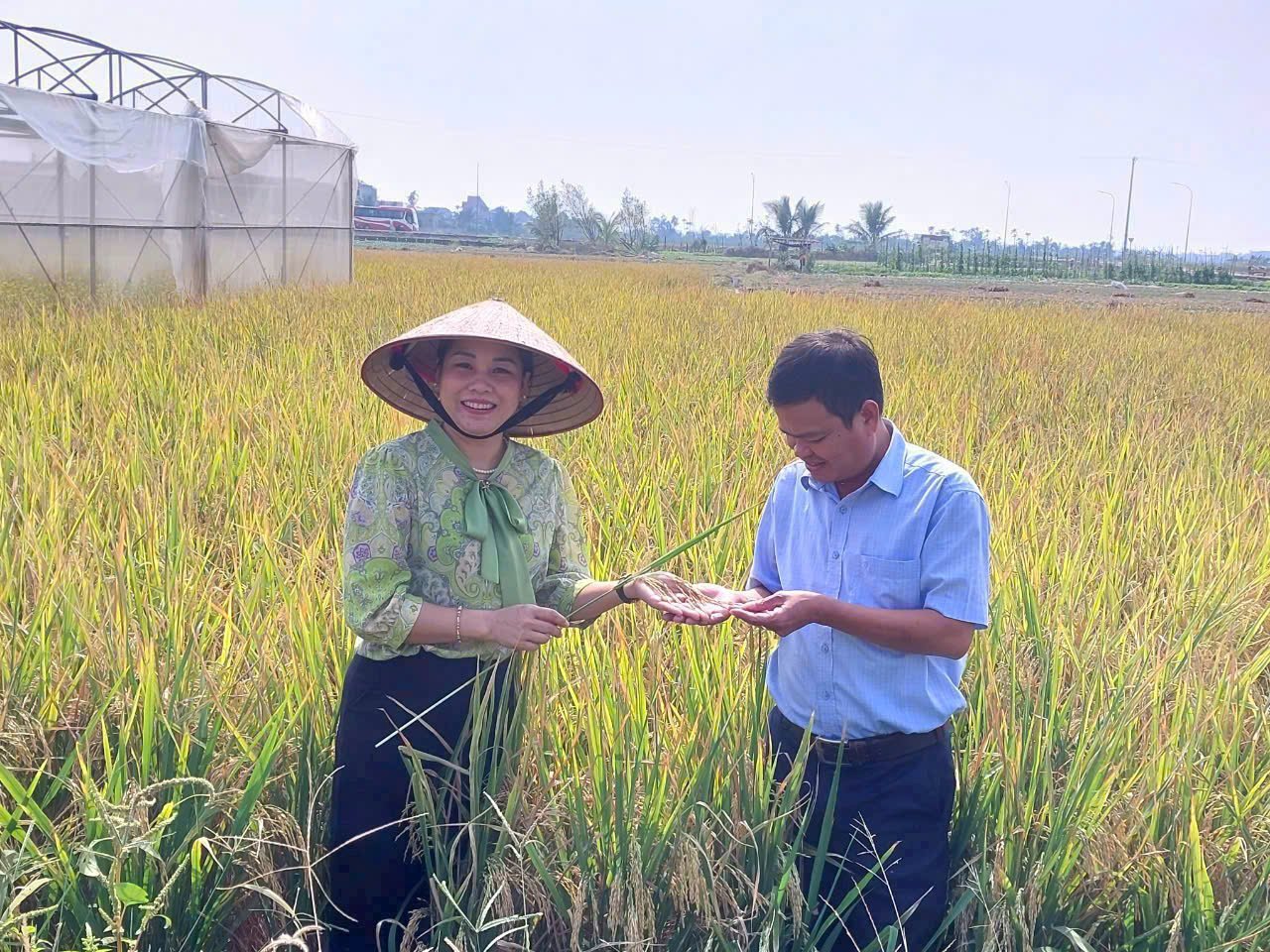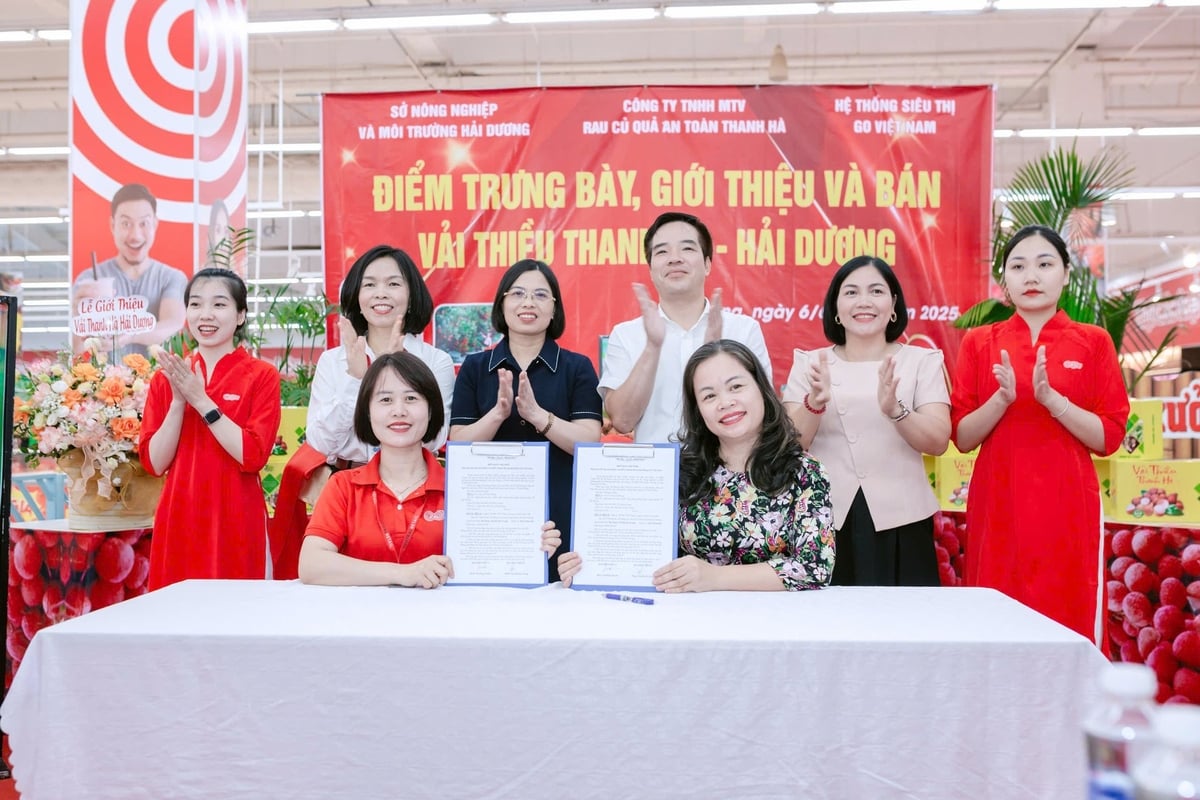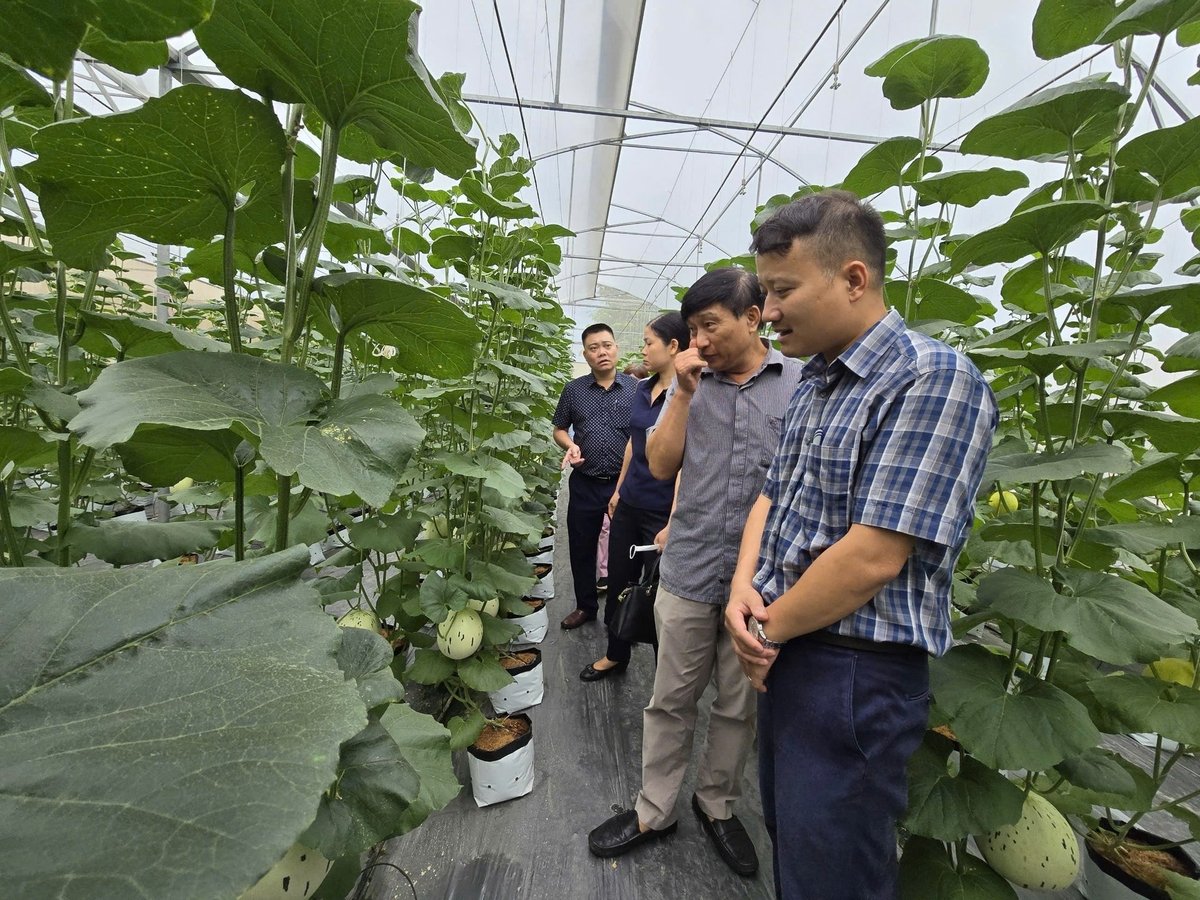December 31, 2025 | 13:08 GMT +7
December 31, 2025 | 13:08 GMT +7
Hotline: 0913.378.918
December 31, 2025 | 13:08 GMT +7
Hotline: 0913.378.918
Hai Phong is often associated with its vibrant seaport and industrial landscape, capturing the essence of a bustling city. However, beneath its urban exterior exists a neglected “gold mine”, the agricultural sector of Hai Phong. For any investor, location, natural resources, and policy incentives are key considerations, and Hai Phong offers all three in abundance.

Ms. Nguyen Thi Ha, Director of Thuy Huong Agricultural Service Cooperative, who is working with farmers to exploit hundreds of hectares of specialty rice in the area outside the dike.
Hai Phong City, strategically positioned at the gateway to the sea in Northern Vietnam, serves as a significant logistics hub within the heart of the Hanoi - Hai Phong - Quang Ninh economic triangle, following its recent expansion. The modern deep-water port system serves as an essential route for agricultural products, facilitating their access to global markets with efficiency in both cost and speed.
The former Hai Phong region features more than 71,800 hectares of agricultural land alongside a 125-kilometre coastline, which includes three significant fishing grounds: Bach Long Vy, Long Chau, and Cat Ba. Over 24,000 hectares of tidal flats along the coastline present significant opportunities for advanced aquaculture initiatives. The recent merger involving the agricultural lands of the former Hai Duong province enhances this advantage significantly.
The city boasts a consumer base of over four million residents, boosted by industrial workers and tourists, which establishes a reliable market for safe, high-quality food products. In light of this potential, Hai Phong has implemented a range of policies aimed at bolstering large-scale agricultural and aquaculture production from 2022 to 2025.

Thanh Ha litchi consumption promotion is held annually at supermarkets in Hai Phong.
The anticipated merger of Hai Phong and Hai Duong is poised to generate considerable momentum within the agriculture sector. The newly formed Hai Phong City is poised to enhance production capabilities, integrate advanced technologies, develop agricultural value chains, and draw significant investment through a strategic combination of strengths.
Despite this promise, Hai Phong's agriculture faces considerable limitations that hinder its development. The Department of Agriculture and Environment reports that fragmented and small-scale production continues to pose a significant challenge. The Hai Phong area previously boasted 177 certified agro-aquatic processing facilities, with more than 70% categorized as household-scale operations. Furthermore, nearly 8,000 additional small processing units exist, with the former Hai Duong area encountering similar obstacles.
This has led to a weak, lacking-in-sophistication agro-processing industry. The majority of products undergo minimal processing, with limited deep processing taking place. Even for exports, agricultural goods are mainly in raw form. The machinery employed at these facilities is generally characterized by low capacity and outdated technology, leading to considerable post-harvest losses in terms of both quantity and quality.
Despite boasting world-class seaport infrastructure, Hai Phong faces a paradox: its agricultural logistics services remain underdeveloped and expensive. The current landscape presents a significant opportunity for investment in cold storage facilities, irradiation centers, packaging solutions, and specialized transportation services.
As of now, Hai Phong boasts 287 products that have received certification under the OCOP (One Commune One Product) program, with 87 of those achieving a prestigious four-star rating. In the latest assessment, Hai Duong has emerged as one of the leading provinces in the country, boasting 475 OCOP products and 60 traditional craft villages, which feature 8 five-star OCOP products.

High-tech agricultural production models in Hai Phong are currently still fragmented and small-scale.
This development paves the way for premium agricultural products from both regions to reach wider markets. The merger underscores the potential for development in agriculture and rural areas. However, without investment to scale up production and build strong branding, these products may struggle to reach further.
For Hai Phong's agricultural sector to advance, it necessitates more than mere financial investment; it calls for strategic investors and prominent enterprises that can introduce cutting-edge processing technologies, contemporary management systems, and connections to global value chains. The current moment presents an opportunity for the development of large-scale processing plants, the establishment of modern post-harvest centers, and the implementation of collaborative models that unite businesses and farmers in the creation of centralized raw material zones. The new Hai Phong is poised to strengthen its foundation through a focus on three key economic pillars: industry, services, and agriculture.
Vu Van Hoat, the Head of the Fisheries, Livestock, and Veterinary Sub-Department of the former Hai Duong province, remarked that both regions possess unique advantages in agricultural production. The merger has resulted in significant development opportunities, enabling the integration of strengths and the planning of extensive, sustainable farming and processing areas. This presents a significant opportunity to achieve a breakthrough in agriculture for the newly developed Hai Phong City.
Translated by Linh Linh
/2025/12/29/0829-2-000508_274.jpg)
(VAN) Hai Phong is tightening management, with 100% of fishing vessels licensed and equipped with vessel monitoring systems, joining the national effort to lift the EC's 'yellow card.'
/2025/12/27/2744-1-121716_241.jpg)
(VAN) The Viet Nam Environment Protection Fund is the national environment protection fund and a state financial institution under the Ministry of Agriculture and Environment.
/2025/12/27/2015-2-111213_813.jpg)
(VAN) In efforts to realize the goal of Net Zero emissions, reducing urban emissions is regarded as a key solution.

(VAN) Deputy Prime Minister Tran Hong Ha requested to design the EPR mechanism toward a circular economy that is transparent, feasible, and non-administrative and aligned with actual recycling capacity.

(VAN) On December 24, Deputy Prime Minister Tran Hong Ha chaired a meeting about approving greenhouse gas emission quotas for 2025 - 2026 period.

(VAN) As Viet Nam enters a new era, the national agricultural sector must proactively adapt to global trends to transform current challenges into strategic development opportunities.
/2025/12/18/5046-3-154320_307.jpg)
(VAN) Granting planting area codes is a solution that helps Lao Cai manage forests effectively while also laying a data foundation to support the development of the carbon credit market in the future.